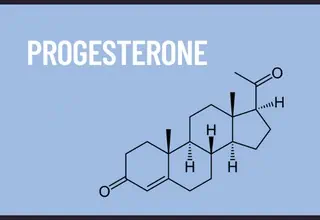
In women, too much testosterone can promote insulin resistance and visceral fat.
That’s why androgen excess is the primary driver of weight gain with polycystic ovary syndrome (PCOS), some types of birth control, and perimenopause.
Lara Briden - The Period Revolutionary
Leading the change to better periods and hormones
Body-identical or bioidentical menopausal hormone therapy uses hormones that are exactly identical to human hormones. Bioidentical hormones are safer than other types of hormone replacement, both in terms of cardiovascular risk and breast cancer risk. Examples include transdermal estradiol patches and oral micronized progesterone.

In women, too much testosterone can promote insulin resistance and visceral fat.
That’s why androgen excess is the primary driver of weight gain with polycystic ovary syndrome (PCOS), some types of birth control, and perimenopause.

Progesterone has been both ignored and wrongly blamed for side effects it does not cause. How did that happen?
For one thing, progesterone was discovered shortly after estrogen. Thus missing the opportunity to be part of the tidy hormone dichotomy of “testosterone for men and estrogen for women.” Also, progesterone could not (at first) be made into an oral medication, so was replaced by progestins.

Almost all types of hormonal birth control switch off ovarian function and, therefore, switch off the ovarian hormones estradiol, testosterone, and progesterone. Here’s a bit more about each method.

A tendency to allergies or high histamine can increase the risk of perimenopausal symptoms such as night sweats, anxiety, pain, sleep disturbance, migraines, and heavy periods. That’s because histamine increases with estrogen, and estrogen is higher than normal during the early years of perimenopause.